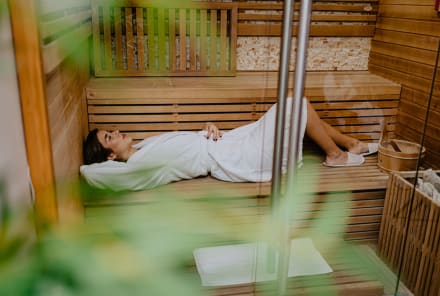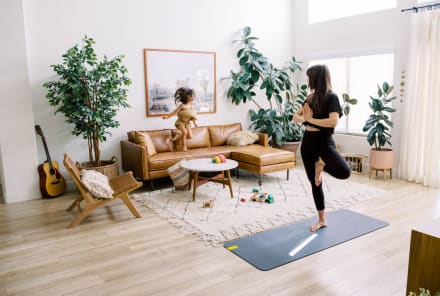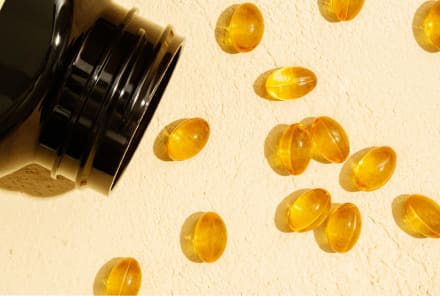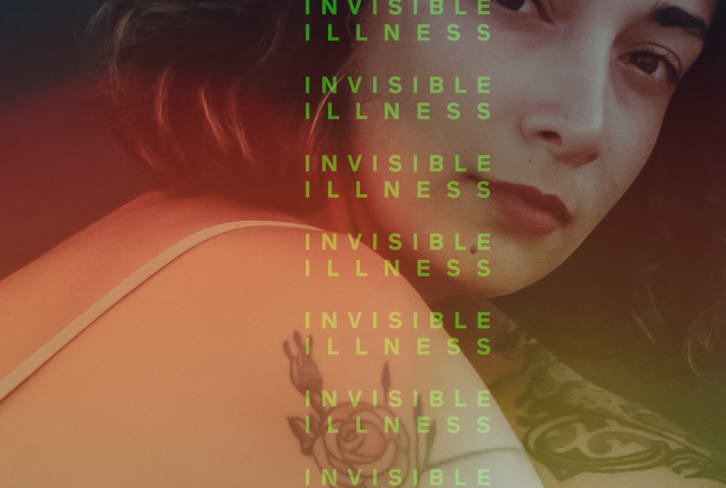Advertisement

Menstrual cups are safe, efficient, inexpensive, and healthy for your body (and the environment). So why aren't more people using them? We're willing to guess that the hesitation stems from a lack of understanding and familiarity. After all, these days tampons and pads dominate the period market and come in just about every shape, size, and iteration imaginable. By comparison, menstrual cups—reusable silicone cups that sit in the vagina and collect period blood—are shrouded in a bit of mystery.
Here's the truth about five myths that might be keeping you from switching over to a cup—and why it’s time to put the misinformation to rest.
Myth #1: They're difficult to put in.
Many people assume that menstrual cups will be tricky and painful to apply since they're larger than tampons. But did you know they're actually increasingly being used by younger generations? If an 11-year old girl can insert one, so can you! It just takes a bit of getting used to.
You'll likely have to practice for a cycle or two before you really get in the swing of things, but most cups come with detailed instruction manuals to guide you along the way. Just like with tampons, there are multiple positions and techniques for inserting cups. Remember how weird inserting your first tampon was, and how normal it feels now? Menstrual cups will become just as comfortable.
Menstrual cups are also unique in that they help you get to know your body. Because most tampons these days come with an applicator, many women are out of touch with their own anatomy. By comparison, menstrual cups require you to manually insert the silicone cup using your fingers and check for a tight seal by running a finger along the cup’s base, thereby helping the user become more familiar with her body—be it the position of her cervix, the distance between her vaginal walls, etc.
Myth #2: Only hippies use them.
As the market for conscious, reusable, and healthy period products continues to grow, it’s safe to say that the menstrual cup option is starting to gain some serious traction.
Emerging research on the health and environmental concerns of tampons and pads is causing more and more young women to look to alternative period products. And according to Vili Petrova, the founder of LENA Cup, it's these health-conscious millennials—not "hippies"—that are leading the menstrual cup revolution. "LENA was designed for a young and active modern woman who is in control of her body and makes conscious decisions that will improve her life and not compromise the environment," Vili tells mindbodygreen.
Myth #3: They're uncomfortable.
Menstrual cups are designed to comfortably sit in the vaginal canal past the pelvic zone, but away from the cervix. Talk to nearly any consistent cup user and they'll tell you that once the cup is inserted correctly, it's easy to forget it's there altogether. This is because the body actually adjusts to the presence of the cup immediately upon insertion, and the vaginal walls keep the cup snug and in place, regardless of what physical activities you engage in.
Menstrual cups are super comfortable (almost undetectable!), they stay put as you move (perfect for active women!), and you can leave them in for up to 12 hours without worrying about sensation, spillage, or odor. Ready to make the switch yet?
Myth #4: They're messy and they leak.
Essentially, the most common reason why menstrual cups leak for first-time users is due to improper positioning. If the cup is inserted crooked, doesn’t fully ‘pop’ open, or it doesn’t seal to your vaginal walls, there is a chance for leakage—but with some practice and experimentation, these initial leakage issues all but disappear. Menstrual cups are designed to catch all of the blood directly from your cervix, so once you become an insertion pro, there will be no mess and you won’t have to touch any blood. Most cup users can wear their cups for 12 hours at a time, comfortably forgetting they are on their period for an entire day or a full night’s sleep!
Not to mention that unlike tampons, which dry out the vagina regardless of when they are inserted by absorbing all of the vaginal moisture and natural fluids (causing itchiness and dryness), you can actually insert your cup before your period begins to ensure it won't catch you off guard.
As mentioned earlier, if you do experience spotting, it's probably a sign that your cup didn't create a proper seal. When applying, make sure the cup is snug—and thus sealed to your vaginal wall—by running a finger along the base of the cup to ensure the cup is fully open and securely sealed.
Myth #5: They aren't safe.
In every respect, menstrual cups are actually way safer than tampons. They collect blood instead of absorbing it, and therefore are far less likely to cause conditions like Toxic Shock Syndrome (TSS). They also don't expose the user to harmful bleaches and chemicals, found in most conventional tampons. Additionally, cups don't absorb the natural moisture of the vaginal environment, thereby helping to maintain healthy pH levels, which result in healthier intimate flora (sayonara yeast infections and BV!).
With that said, it's true that you want to be selective when choosing your cup, as not all cups are created equal. Cheap ones can be made from unregulated materials, so make sure to get one that's registered with and regulated by the FDA. A good cup can last you up to 10 years, so invest in a manufacturer that prioritizes safety and transparency, like LENA Cup.
Voted the best starter cup for first-time users for their functional, bell-shaped design and around-the-clock customer care and support, LENA cups are made from high-grade medical silicone that is free of BPA and latex. LENA, and its packaging, are manufactured and assembled within a 50-mile radius in California using only locally sourced and tested medical-grade materials. Every detail—down to its lovely packaging printed with vegetable-based inks and designed to open like a jewelry box—is both functional and sustainable.
Own your period like the modern, active, and conscious woman that you are; give menstrual cups a try, and we bet you’ll say goodbye to pads and tampons forever.


















